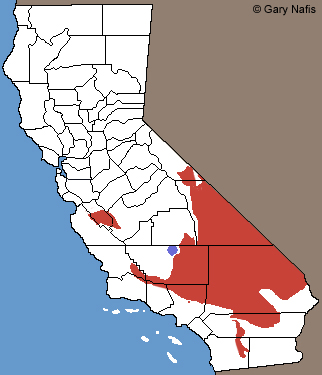|
 |
| Adult, Kern County |
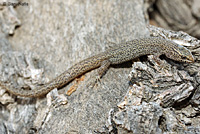 |
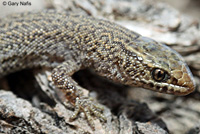 |
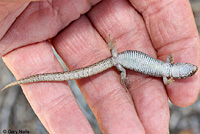 |
| |
Adult, Kern County |
|
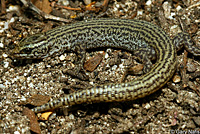 |
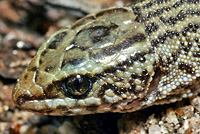 |
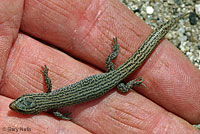 |
| Adult, Riverside County |
 |
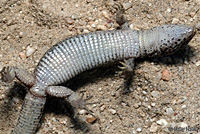 |
 |
| Adult, Kern County |
Adult, Kern County |
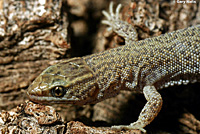 |
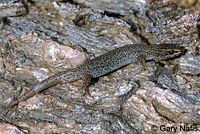 |
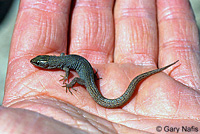 |
| Adult, Kern County |
Adult, Kern County |
Adult, San Bernardino County |
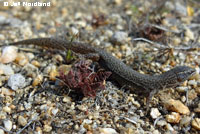 |
 |
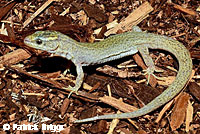 |
Adult, Scissors Crossing, San Diego County © Jeff Nordland
Xantusia wigginsi has also been found at Scissors Crossing and since appearance alone cannot determine the species, it could also be X. wigginsi. |
Adult, San Bernardino County
© Patrick Briggs |
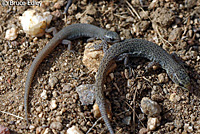 |
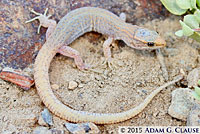 |
 |
Adult and sub-adult, San Diego County
© Bruce Edley |
Adult female, Mono County
© Adam G. Clause |
Unusual pale adult female with orange highlights, Mono County
© Adam G. Clause |
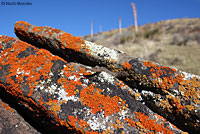 |
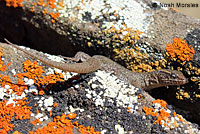 |
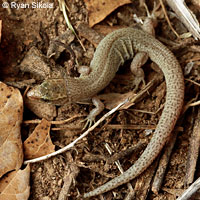 |
| Adult from the northern part of their range in Central California © Noah Morales |
Adult, Santa Barbara County
© Ryan Sikola |
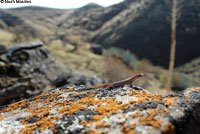 |
 |
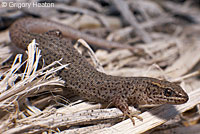 |
| Adult from the northern part of their range in Central California © Noah Morales |
Adult, Los Angeles County
© Grigory Heaton |
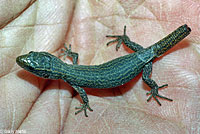 |
 |
 |
| Juvenile, Inyo County, missing the end of its tail. |
Adult, Los Angeles County
© Zeev Nitzan Ginsburg |
 |
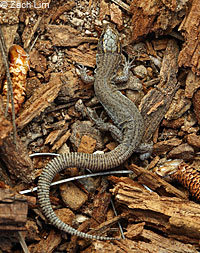 |
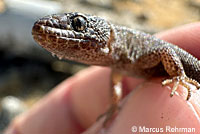 |
Adult, Los Angeles County
© Zeev Nitzan Ginsburg |
Adult, Central California
© Zachary Lim |
Adult, Kern County © Marcus Rehrman |
 |
|
|
The Night Lizards, genus Xantusia, have small granular scales on soft skin.
Xantusia henshawi is shown here. |
|
|
| |
|
|
| Tail Loss Defense |
 |
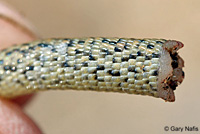 |
|
| This adult lizard dropped its tail as a defensive measure. (You can see the tail wriggling after it was dropped off in the video below.) |
|
| |
|
| Habitat |
 |
 |
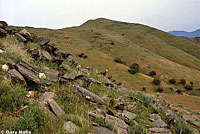 |
| Habitat, San Bernardino County |
Habitat, Kern County |
Rocky habitat, Kern County |
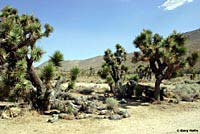 |
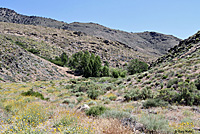 |
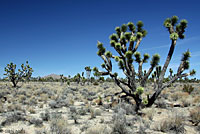 |
| Habitat, Kern County |
Habitat, Inyo County |
Habitat, San Bernardino County |
| |
|
|
| Short Videos |
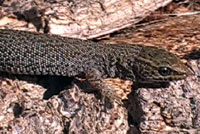 |
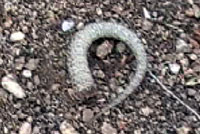 |
|
| A view of some Desert Night Lizards, discovered underneath dead Joshua Tree branches in the desert, close up and in motion. |
The detached tail of a Desert Night Lizard wriggles on the ground. (It kept wriggling for almost 4 minutes.)
Many species of lizards release their tail when they want to escape from a potential predator. The tail then continues to wriggle like a living creature. The aim is to momentarily distract the predator away from the lizard's vulnerable body, allowing it to escape, while the predator is left holding or trying to catch the expendable tail. This tail dropping is called "Autotomy." Losing the tail does not seriously harm the lizard, and may save its life, but the loss of a tail might have a negative effect on the lizard's social standing. Dropped tails do grow back, but these regenerated tails are often not as long or as perfect as the original. |
|
|
|
|
| Description |
| |
| Size |
1.5 - 2.75 inches long from snout to vent (3.8 - 7 cm). (Stebbins 2003)
|
| Appearance |
A small thin lizard with soft skin with fine granular scales on most of the body, a head covered with large plates, lidless eyes with vertical pupils, a gular fold, and a detachable tail.
Dorsal scales in 30 - 50 lengthwise rows at mid-body.
|
| Color and Pattern |
Color is olive, grayish, or brown with light brown or black spots, sometimes forming narrow stripes. A narrow beige stripe, edged in black, extends from the eye to the shoulder.
The underside is whitish and made up of large square scales, usually in 12 rows. |
| Male / Female Differences |
Males have enlarged femoral pores.
|
| Life History and Behavior |
Activity |
Diurnal (contrary to the common name) and crepuscular.
May be nocturnal during the heat of the summer.
Abundant, but secretive - spending most of its life undercover in and underneath fallen vegetation and debris, such as Joshua tree branches, dead yucca clumps, logs, pine bark, and also under rocks and in rock crevices.
Typically not active on the surface away from cover. Sedentary, spending most of its life in a small area.
In 2010, researchers at UC Santa Cruz discovered that Xantusia vigilis live in family groups, showing social behavior more typical of mammals and birds such as primates, ground squirrels, and woodpeckers. (A few other lizard species have also evolved a social system around a nuclear family.) The young night lizards remain with the father, mother, and siblings for several years, all living under the same plant debris.The young feed themselves and do not receive any direct care from the parents. It is not yet known what survival advantages the group living arrangement provides.
(Davis, et. al. Reported in ScienceDaily 10/8/2010.)
|
| Defense |
When frightened, runs away quickly and dashes under cover. The tail breaks off easily and continues wriggling to distract would-be predators as the lizard runs away as you can see in this video. This does not hurt the lizard, although it might suffer from the stress of attempted predation, the loss of fatty energy that is stored in the tail, and have difficulties finding a mate during breeding season due to a less healthy appearance.
More information about tail loss and regeneration. |
| Diet and Feeding |
| Eats small invertebrates inhabiting the decaying vegetation in which it lives including ants, termites, beetles, caterpillars, crickets, and spiders. |
| Reproduction |
Mates in late spring.
Bears live young, 1-3 per brood, from August to October.
|
| Habitat |
Utilizes a variety of habitats in arid and semi-arid areas, including those grown with Joshua tree, desert scrub, piñon-juniper, basin sagebrush, chaparral, pine-oak woodland, and yucca.
|
| Geographical Range |
Found on the desert slopes of the Peninsular ranges, throughout the Mojave Desert, along the east slopes of the Sierra Nevada Mountains north to west of Bishop, the Inyo and Panamint mountains, the Greenhorn and Piute Mountains and upper Kern River Canyon in the southern Sierra Nevada Mountains, the coastal side of the mountains in upper Santa Clara River drainage, the headwaters of Big Tujunga and the upper San Gabriel River drainage, and the inner coast ranges at the Panoche Hills and Pinnacles National Monument.
Also found on Santa Catalina Island, but these may have been introduced.
First locality records for Mono County were published in 2016 (Herpetological Review 47(3), 2016) extending the range to the northernmost localities for the species west of Utah.
The range extends east of California into Nevada, Arizona, and extreme southwest Utah and south barely into Mexico.
|
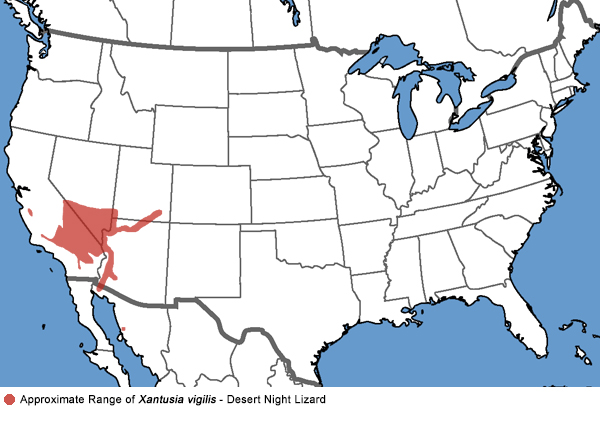 |
| Elevational Range |
From sea level to 9,300 ft. (2,830 m). (Stebbins 2003)
|
| Notes on Taxonomy |
Several subspecies of Xantusia vigilis were traditionally recognized, including two in California - X. v. vigilis, and X. v. sierrae before it was elevated to the full species X. sierrae.
---------------------------------------------------------------------------------------------------------------------------------------------------------------------
Using nuclear DNA studies, Leavitt et al, 2007, concluded that "...the Xantusia vigilis group continues to reveal multiple unrecognized cryptic species. They provide support for the recognition of new species within the X. vigilis complex, including X. wigginsi in California, but they continue to recognize the subspecies X. v. vigilis and X. v.sierrae. In addition, they identify several major clades in the X. vigilis group, four of which occur in California -
X. vigilis
X. wigginsi
Yucca Valley clade
San Jacinto clade
The other three clades are
X. arizonae
X. bezyi
X. sonora
"Both the San Jacinto and Yucca Valley mitochondrial clades in southern California appear to be of ancient origin... and nuclear data also support their evolutionary independence." These two clades are related to X. wigginsi, but they did not group them with X. wigginsi or X. vigilis, nor did they describe them as independent species, and neither did Robert L. Bezy, one of the co-authors, in his book on Xantusia published in 2019, so I have kept them as X. vigilis pending further research.
---------------------------------------------------------------------------------------------------------------------------------------------------------------------
The 2008 Society for the Study of Amphibians and Reptiles Standard Names List uses X. vigilis based on Sinclair et. al (2004, Am. Nat. 164:396-141).
---------------------------------------------------------------------------------------------------------------------------------------------------------------------
"The standard English name for this clade has been changed (by adding “Northern”), following Bezy (2019, Night Lizards, Eco Herpetological Publishing), to eliminate redundancy with the English name of the clade Xantusiidae."
(Nicholson, K. E. (ed.). 2025 SSAR Scientific and Standard English Names List)
---------------------------------------------------------------------------------------------------------------------------------------------------------------------
Alternate and Previous Names (Synonyms)
Xantusia vigilis vigilis - Yucca Night Lizard (Stebbins 2003)
Xantusia vigilis vigilis - Common Night Lizard (Stebbins 1985)
Xantusia vigilis vigilis - Desert Night Lizard (Stebbins 1966)
Xantusia vigilis - Yucca Night Lizard (Stebbins 1954)
Xantusia vigilis - Desert Night Lizard (Xantu's Lizard) (Grinnell and Camp 1917)
|
| Conservation Issues (Conservation Status) |
| None |
|
|
Taxonomy |
| Family |
Xantusiidae |
Night Lizards |
Baird, 1858 |
| Genus |
Xantusia |
Night Lizards |
Baird, 1859 “1858” |
Species
|
vigilis |
Desert Night Lizard |
Baird, 1859 “1858” |
|
Original Description |
Xantusia vigilis - Baird, 1858 - Proc. Acad. Nat. Sci. Philadelphia, Vol. 10, p. 255
from Original Description Citations for the Reptiles and Amphibians of North America © Ellin Beltz
|
|
Meaning of the Scientific Name |
Xantusia - honors Xantus, John
vigilis - Latin = alert or watchful - possibly refers to the lack of eyelids
from Scientific and Common Names of the Reptiles and Amphibians of North America - Explained © Ellin Beltz
|
|
Related or Similar California Lizards |
X. henshawi - Granite Night Lizard
X. gracilis - Sandstone Night Lizard
X. sierrae - Sierra Night Lizard
X. r. reticulata - San Clemente Night Lizard
X. wigginsi - Baja California Night Lizard
|
|
More Information and References |
California Department of Fish and Wildlife
Robert L. Bezy. Night Lizards: Field Memoirs and a Summary of the Xantusiidae. ECO Herpetological Publishing & Distribution. 2019.
Hansen, Robert W. and Shedd, Jackson D. California Amphibians and Reptiles. (Princeton Field Guides.) Princeton University Press, 2025.
Stebbins, Robert C., and McGinnis, Samuel M. Field Guide to Amphibians and Reptiles of California: Revised Edition (California Natural History Guides) University of California Press, 2012.
Stebbins, Robert C. California Amphibians and Reptiles. The University of California Press, 1972.
Flaxington, William C. Amphibians and Reptiles of California: Field Observations, Distribution, and Natural History. Fieldnotes Press, Anaheim, California, 2021.
Nicholson, K. E. (ed.). 2025. Scientific and Standard English Names of Amphibians and Reptiles of North America North of Mexico, with Comments Regarding Confidence in Our Understanding. Ninth Edition. Society for the Study of Amphibians and Reptiles. [SSAR] 87pp.
Samuel M. McGinnis and Robert C. Stebbins. Peterson Field Guide to Western Reptiles & Amphibians. 4th Edition. Houghton Mifflin Harcourt Publishing Company, 2018.
Stebbins, Robert C. A Field Guide to Western Reptiles and Amphibians. 3rd Edition. Houghton Mifflin Company, 2003.
Behler, John L., and F. Wayne King. The Audubon Society Field Guide to North American Reptiles and Amphibians. Alfred A. Knopf, 1992.
Robert Powell, Roger Conant, and Joseph T. Collins. Peterson Field Guide to Reptiles and Amphibians of Eastern and Central North America. Fourth Edition. Houghton Mifflin Harcourt, 2016.
Powell, Robert., Joseph T. Collins, and Errol D. Hooper Jr. A Key to Amphibians and Reptiles of the Continental United States and Canada. The University Press of Kansas, 1998.
Bartlett, R. D. & Patricia P. Bartlett. Guide and Reference to the Turtles and Lizards of Western North America (North of Mexico) and Hawaii. University Press of Florida, 2009.
Jones, Lawrence, Rob Lovich, editors. Lizards of the American Southwest: A Photographic Field Guide. Rio Nuevo Publishers, 2009.
Smith, Hobart M. Handbook of Lizards, Lizards of the United States and of Canada. Cornell University Press, 1946.
Taylor, Emily. California Lizards and How to Find Them. Heyday, Berkeley, California. 2025.
Lemm, Jeffrey. Field Guide to Amphibians and Reptiles of the San Diego Region (California Natural History Guides). University of California Press, 2006.
DEAN H. LEAVITT, ROBERT L. BEZY, KEITH A. CRANDALL, JACK W. SITES JR (2007)
Multi-locus DNA sequence data reveal a history of deep cryptic vicariance and habitat-driven convergence in the desert night lizard Xantusia vigilis species complex (Squamata: Xantusiidae)
Molecular Ecology 16 (21), 4455–4481.
(Alison R. Davis, Ammon Corl, Yann Surget-Groba, Barry Sinervo. Convergent evolution of kin-based sociality in a lizard. Proceedings of the Royal Society B, 2010; DOI: 10.1098/rspb.2010.1703.)
Joseph Grinnell and Charles Lewis Camp. A Distributional List of the Amphibians and Reptiles of California. University of California Publications in Zoology Vol. 17, No. 10, pp. 127-208. July 11, 1917.
|
|
|
The following conservation status listings for this animal are taken from the July 2025 State of California Special Animals List and the July 2025 Federally Listed Endangered and Threatened Animals of California list (unless indicated otherwise below.) Both lists are produced by multiple agencies every year, and sometimes more than once per year, so the conservation status listing information found below might not be from the most recent lists, but they don't change a great deal from year to year.. To make sure you are seeing the most recent listings, go to this California Department of Fish and Wildlife web page where you can search for and download both lists:
https://www.wildlife.ca.gov/Data/CNDDB/Plants-and-Animals.
A detailed explanation of the meaning of the status listing symbols can be found at the beginning of the two lists. For quick reference, I have included them on my Special Status Information page.
If no status is listed here, the animal is not included on either list. This most likely indicates that there are no serious conservation concerns for the animal. To find out more about an animal's status you can also go to the NatureServe and IUCN websites to check their rankings.
Check the current California Department of Fish and Wildlife sport fishing regulations to find out if this animal can be legally pursued and handled or collected with possession of a current fishing license. You can also look at the summary of the sport fishing regulations as they apply only to reptiles and amphibians that has been made for this website.
This animal is not included on the Special Animals List, which indicates that there are no significant conservation concerns for it in California.
|
| Organization |
Status Listing |
Notes |
| NatureServe Global Ranking |
|
|
| NatureServe State Ranking |
|
|
| U.S. Endangered Species Act (ESA) |
None |
|
| California Endangered Species Act (CESA) |
None |
|
| California Department of Fish and Wildlife |
None |
|
| Bureau of Land Management |
None |
|
| USDA Forest Service |
None |
|
| IUCN |
|
|
|
|
